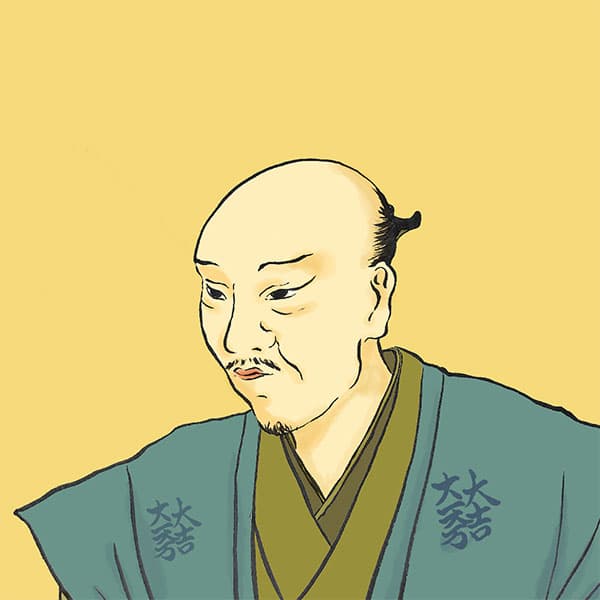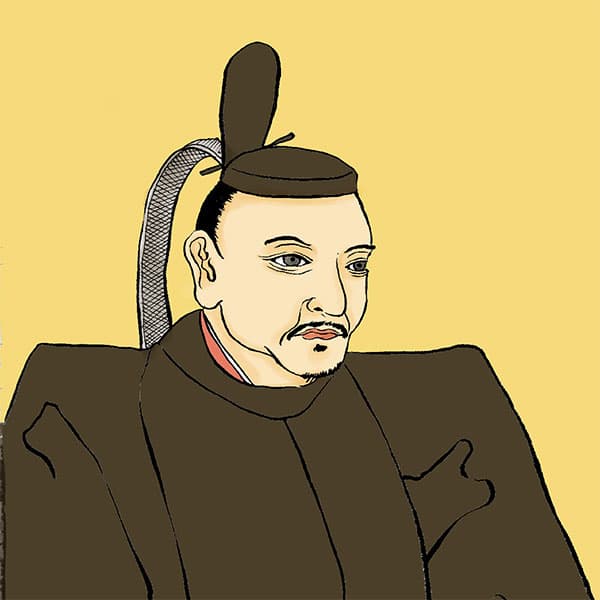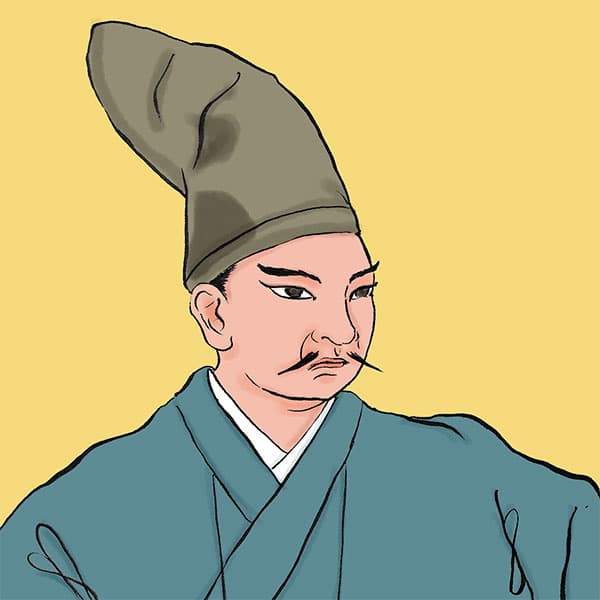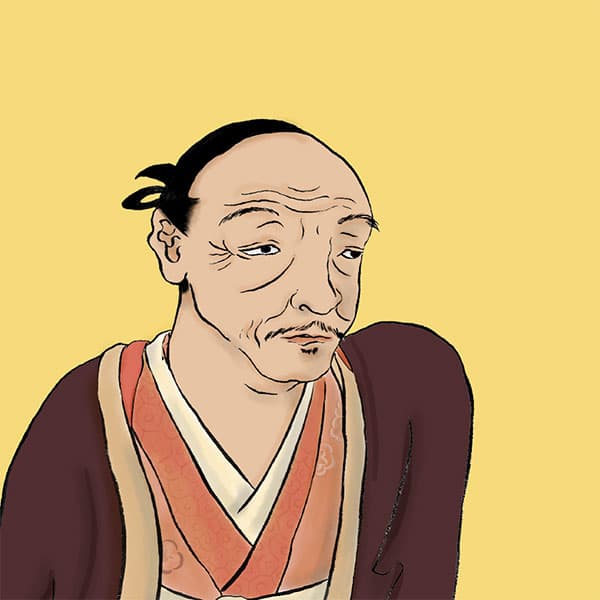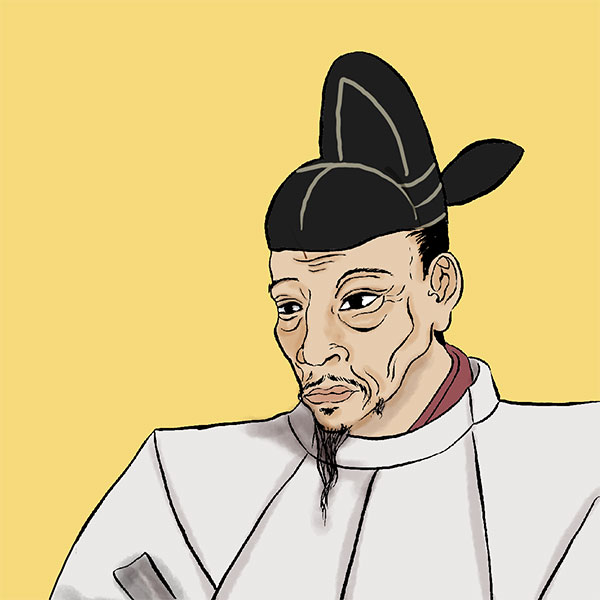Battle of Oshi Castle (1/2)A “floating castle” that withstood the onslaught of the Toyotomi army
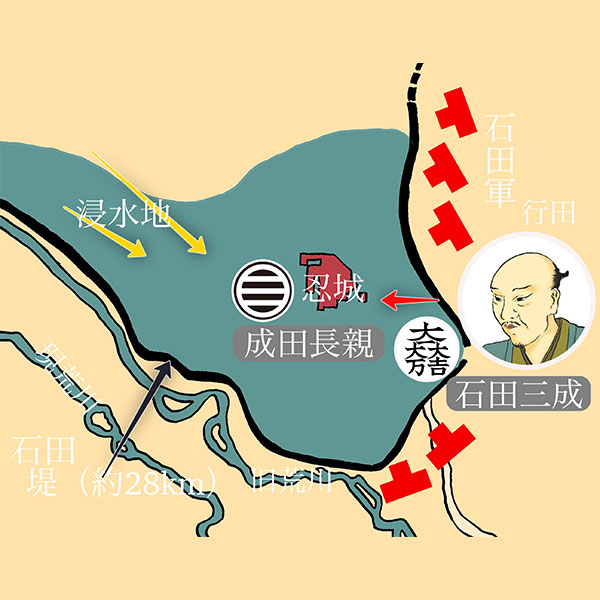
Battle of Oshi Castle
In 1590, Toyotomi Hideyoshi attacked the Hojo family in the Odawara Conquest. Although it is famous for the siege of Odawara Castle, the Toyotomi army also attacked branch castles of the Hojo family in various locations. One of these was Oshi Castle, located in Shinobu, Saitama District, Musashi Province (present-day Gyoda City, Saitama Prefecture). It was the setting for the ``Battle of Oshi Castle'' that was featured in the movie ``Nobo's Castle'', but it did not succumb to Ishida Mitsunari's water attack and did not fall until Odawara Castle fell. This time, we will take a closer look at the Battle of Shinobi Castle.
What was the “Odawara Conquest” that led to the Battle of Oshijo?
The direct cause of the Battle of Oshi Castle was Toyotomi Hideyoshi's ``Odawara Conquest.'' At the time of the Odawara Conquest in 1590, Hideyoshi had control of all areas except Kanto and Oshu, and was one step away from unifying the country.
The one who prevented this was the Hojo family, which controlled the Kanto region. Hideyoshi asked the head of the Hojo family, Ujinao Hojo, and his father, Ujimasa, to go to Kyoto in order to encourage the Hojo family to submit to their vassals, but the Hojo side refused. With the persuasion of Tokugawa Ieyasu, who was related to the Hojo family, Ujimasa's younger brother Ujinoki Hojo finally went to Kyoto as his representative. However, when Ujiki came to Kyoto, he asked Hideyoshi to resolve the issue of Ueno Province and Numata (Numata City, Gunma Prefecture), where the Hojo family was in conflict with the Sanada family. They negotiated by saying, ``If your request is granted, I will send Ujimasa to Kyoto.''
Numata was an important military base in northern Kanto, and was a territory that was disputed between the Hojo, Uesugi, and Sanada families. The rulers changed one after another, from the Hojo family to the Uesugi family to the Hojo family to the Sanada family, and it was planned to become the Hojo family due to the reconciliation of the Tensho Migo War in 1582, but the Sanada family rejects this. As a result, the two families continued to fight over territorial rights.
Out of consideration for the Hojo family, Hideyoshi decided to cede two-thirds of Numata to the Hojo family and one-third to the Sanada family (Numata Arbitration). However, the Hojo family postponed their move to Kyoto even further. Hideyoshi was angered by this and decided to subjugate the Hojo family. In October 1589, Kuninori Inomata, the ruler of Numata Castle and from the Hojo side, embarked on the conquest of Hojo in the wake of the Mei Kurumi Castle Incident, in which he captured Mei Kurumi Castle in Sanada territory.
Why did the ``Mei Kurumi Castle Incident'' become an issue? This is because after Hideyoshi became Kanpaku, he issued the ``Sōkaku Rei,'' which prohibited feudal lords from fighting each other without permission. Initially, Kyushu was targeted, but the scope was later expanded to include Kanto and Tohoku in 1587.
Then, in February 1590, the Odawara conquest began. The Toyotomi army led by Hideyoshi was approximately 210,000. In contrast, the Hojo army numbered approximately 50,000 to 82,000 troops, giving the Toyotomi army an overwhelming advantage in terms of military strength. Hideyoshi besieged Odawara Castle with a large army of approximately 100,000 men. Furthermore, in order to isolate Odawara Castle, he ordered each military commander to attack other castles on the Hojo side. One of them was Oshijo.
Oshi Castle, an impregnable castle ruled by the Narita family
Oshi Castle was the base castle of the Narita clan, which flourished in Musashi Province from the middle of the Muromachi period. It is located in a low-swamp area surrounded by the Tone River to the north and the Arakawa River to the south, and the castle is constructed by connecting islands and highlands scattered in the marsh with bridges. There were about 20 Kuruwa dotted around the islands, and the castles were somewhat complex in shape. There is a natural embankment using the river around the castle, the road leading to the castle is narrow, and there are many rice paddies and marshes beside it. It was known as a famous castle that was easy to defend and difficult to attack.
The head of the family at the time of the Hojo subjugation was Ujiranaga Narita. However, since Ujinaga was stationed at Odawara Castle during the Odawara Conquest, he appointed his uncle, Yasuki Narita, as the castle keeper of Oshi Castle. Yasuki decides to protect the castle with his son Nagachika Narita. At the time of the Odawara conquest, there were only about 500 soldiers in the castle, but surrounding farmers, townspeople, women, and children entered the castle with food and other necessary supplies to help the soldiers. In total, about 3,700 people were holed up.
The person who decided to attack the castle was Hideyoshi's subordinate, Ishida Mitsunari. At the beginning of June, Hideyoshi ordered Mitsunari to lead an army of 23,000 men and attack Oshi Castle. It is said that Mitsunari was chosen because Hideyoshi showed his affection for him. Until now, Mitsunari had been a military commander with strong official characteristics, working behind the scenes in matters such as logistics and internal affairs. For this reason, it is said that Hideyoshi selected Mitsunari, who was a subordinate of his child, in order to have him achieve military success. By the way, in addition to Mitsunari, members such as Yoshitsugu Otani and Masaie Nagatsuka, who later joined Mitsunari's western army in the Battle of Sekigahara, also joined the Oshi Castle capture army.
Battle of Oshi Castle ~ Mitsunari Ishida VS Nagachika Narita
Mitsunari and the Toyotomi army, ordered by Toyotomi Hideyoshi, persuaded Tatebayashi Castle to surrender and then arrived near Oshi Castle. They set up a headquarters at the Omiya exit of the castle and besieged it, and began an attack on June 4th, but they were unable to attack due to the castle's strong defenses. On June 8th, Toshiie Maeda, Kagekatsu Ueda, Masayuki Sanada, Nagamasa Asano, and others joined forces to attack Oshi Castle, but they had a tough time due to the efforts of Princess Kai, the daughter of Ujiranaga Narita. After that, Nagamasa and his friends leave Oshi Castle and move to attack another castle.
On the other hand, at the Narita family, a serious incident actually occurred. Surprisingly, on June 7th, the castle lord, Yasuki Narita, died of illness (some say he died in battle). His son, Nagachika Narita, suddenly succeeded him as castle owner. The main character of ``Nobo no Shiro'' was known as an ``ordinary person'' with no notable military exploits. Thus began the battle between the Toyotomi army led by Mitsunari and the Narita army led by Nagachika.
Ishida Mitsunari starts "water attack"
Mitsunari Ishida struggles to attack Oshi Castle. They moved their camp to Marubeyama Tumulus and surrounded Oshi Castle, but things did not go well. Therefore, Mitsunari implemented ``water attack''. The plan was to build an embankment to dam the Arakawa and Tone Rivers, cut the river embankments, and submerge the castle. The rainy season is in June. The river's water volume has increased, making it the perfect environment for waterboarding.
Mitsunari builds an embankment at a rapid pace to attack the water. He then built a long embankment to the south of the castle, stretching 28km (some say 14km). After hundreds of thousands of people worked day after day from June 9th with the help of neighboring farmers, the embankment was successfully completed on June 14th. Once the embankment, now known as the Ishida embankment, was built, Mitsunari began flooding the area.
A water attack on Oshi Castle, which was surrounded by swamps, may have seemed effective. In fact, the outer castle was submerged in water, and some soldiers drowned in the water that flowed into the castle. However, the main keep did not submerge in the water, giving it an elegant appearance as if it were floating on water. For this reason, Oshi Castle will be called ``Floating Castle'' from now on.
Afterwards, the main enclosure was at one point threatened to sink due to heavy rain, but due to the heavy rain, the Ishida embankment collapsed on June 18th. At this time, approximately 270 members of Toyotomi's army were swallowed up by the muddy waters and died, and the surrounding area turned into a quagmire, making it difficult to walk. Of course, traveling by horse is not an option. The castle became even more difficult to attack.
The reason why the Ishida levee collapsed was that the levee was damaged during the rush construction, or that the farmers who took part in the construction deliberately cut corners in order to protect the Narita family, who were loved by the people. It is also said that this is because the Suicide Squad secretly broke down the embankment. According to the theory that the embankment was destroyed by the Narita side, Risuke Wakimoto and Bei Sakamoto, subordinates of Yasunobu Honjo, who was guarding the Genin entrance, escaped from the castle at night and destroyed the embankment. This was a great success.
In any case, the water attack was a big failure for Mitsunari. Because of this failure in attacking Oshi Castle by water, Mitsunari became known in later generations as ``bad at fighting'' and ``bad at attacking castles.''
Was the “water attack” an order from Hideyoshi?
Although Mitsunari was given a disgraceful label, there is a strong theory that this water attack was actually an order from Hideyoshi, and Mitsunari himself was reluctant to carry out the water attack. Looking at documents from that time, we see that on June 12th, Hideyoshi sent a letter to Mitsunari instructing him to carry out a water attack.
There is a continuation of the article about the Battle of Oshi Castle.

- WriterNaoko Kurimoto(Writer)I am a former travel industry magazine reporter. I have loved history, both Japanese and world history, since I was a child. I usually enjoy visiting temples and shrines, especially shrines, and often do ``pilgrimages to sacred places'' themed around historical figures. My favorite military commander is Ishida Mitsunari, my favorite castle is Kumamoto Castle, and my favorite castle ruins is Hagi Castle. My heart flutters when I see the ruins of battle castles and the stone walls of castle ruins.


